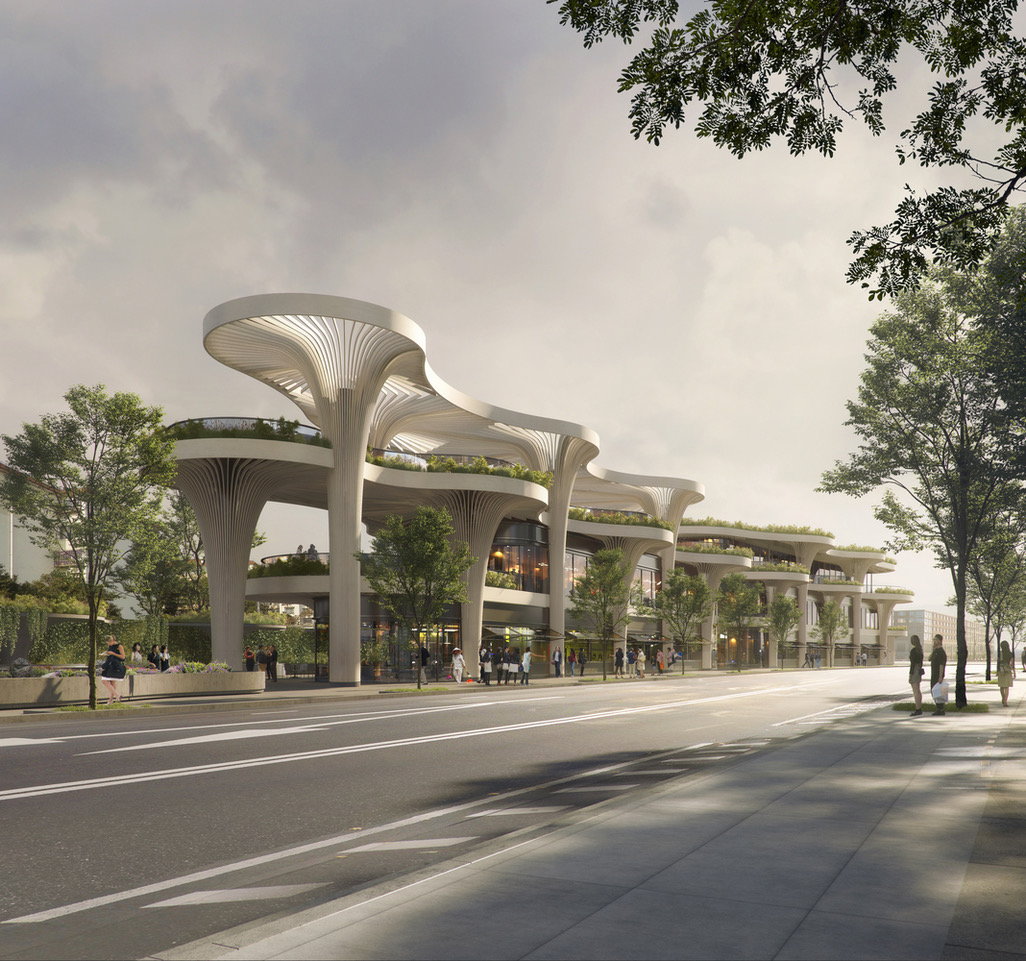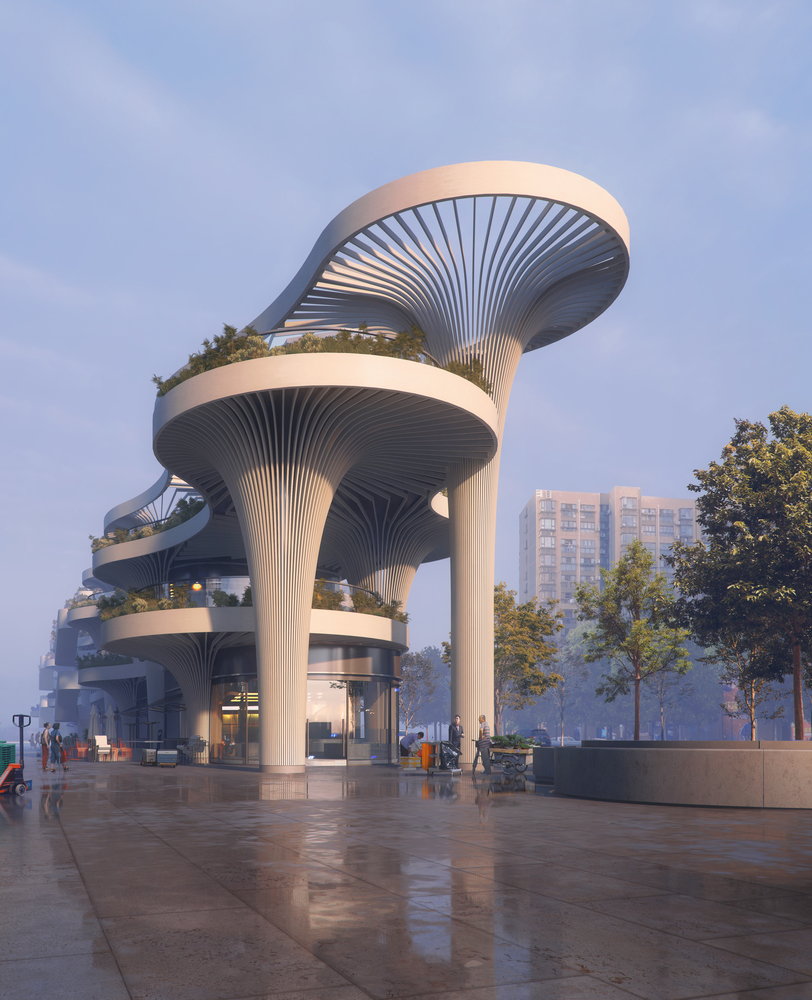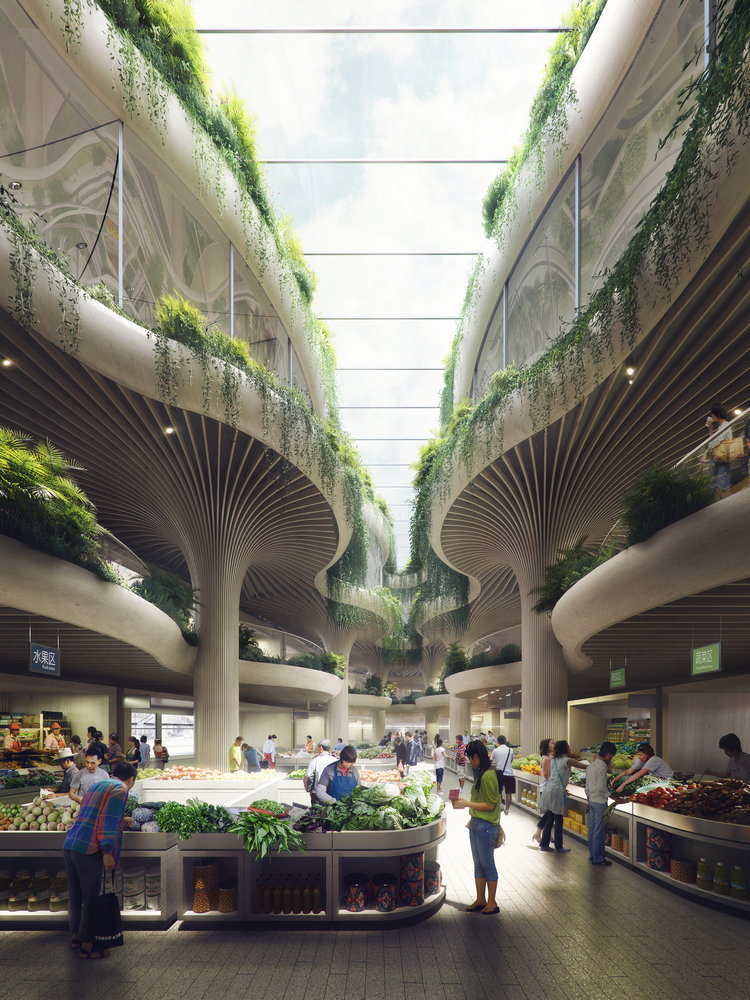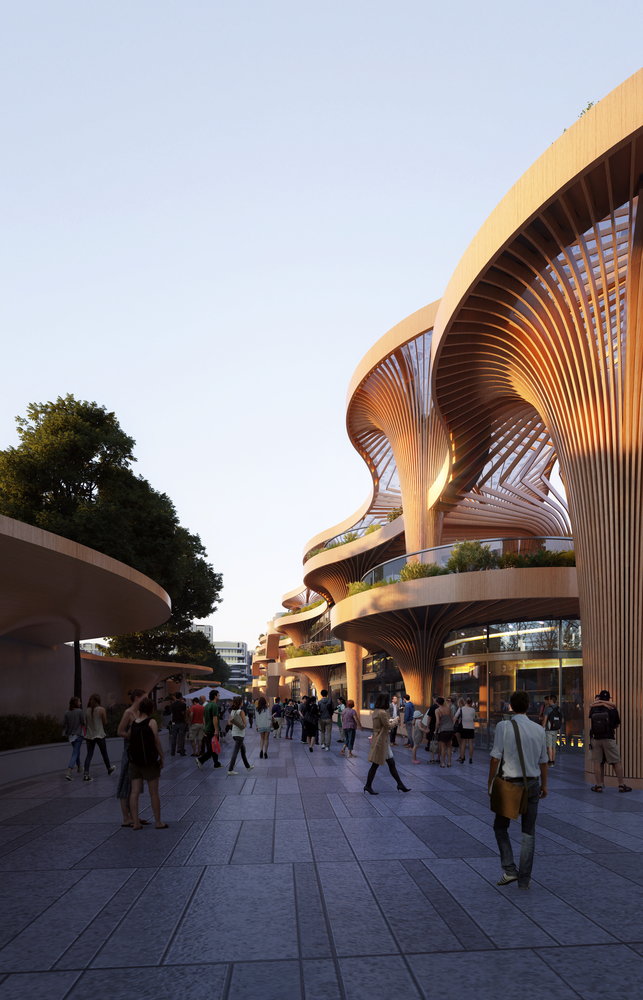Tree-Inspired Solar Powered Shopping Center Offers a Twist on Traditional Chinese Markets
Just about anything we can come up with has already been perfected by nature. To find the best ways to make bullet trains more aerodynamic, produce the ideal wing shapes for aircraft, or develop the grippiest materials for climbing vertical surfaces, we need only look to kingfishers, hawks, and geckos. Features that evolved to suit the conditions of our planet over millions of years are better than whatever our most brilliant human minds can invent. Biomimicry is one of our most important tools to create more advanced and sustainable innovations, from robotics to architecture.

Australian firm Koichi Takada Architects uses biomimicry as the guiding principle in all its designs, including its new Solar Trees Marketplace in the Minhang district southwest of Shanghai, China. The complex takes one of Chinese culture’s most revered and ancient public spaces and modernizes it without compromising the characteristics that make it special. The firm wanted to retain the feeling of discovery and connection to the country’s historic open-air markets with a design that was friendly to both humans and the environment, taking cues from Mother Nature’s own creations.

The result is nothing short of stunning. Currently in the late stages of construction, the three-story mixed-use development features 32 architectural “trees” rising from the ground to form an artificial canopy above hundreds of modular market stalls. Visitors will wind through indoor and outdoor spaces, the timber “branches” above providing shade, shelter from the rain, and a surface for solar panels to power the facility.


50 living camphor trees planted outside signal the beginning of a green corridor that will run down the length of the new Shanghai Tian An Caobao Road Area Residential Masterplan. Ultimately, pedestrians will enjoy a boulevard lined with 3,000 trees and shrubs indigenous to Shanghai, with the color coding of different plantings identifying various neighborhoods and guiding residents home.
“The inclusion of modular market stalls will bring a sense of authenticity to the contemporary development, referencing their history as social and cultural gathering spaces and allowing a new generation to gather at its heart,” says the firm. “Reflecting the Chinese tradition of making guests feel at home — bīn zhì rú guī — the marketplace will generate a powerful sense of community and integrate the private and public domains.”

For the shape of the facility, the Koichi Takada team turned to Shanghai’s nearby forests. The marketplace is a symbolic visual bridge between nature and the city, softening the edges and contributing to a healthier, more livable urban environment in what has long been one of the world’s most polluted cities. It’s due to be completed by the end of 2021.
“We want to humanize buildings in the district, to be more engaging to the public and contribute to the regeneration of communities and their neighborhoods,” says principal architect Koichi Takada. “We want architecture to celebrate cultural identity, along with encouraging pedestrian activities and a more walkable and livable city.

Last year, Koichi Takada Architects showed off a similar approach with Sunflower House, a series of single-family dwellings designed specifically for Italy’s sunny Tuscan climate. Those homes utilize a rotating design and solar roof to maximize sun exposure for energy production and minimize heat gain inside.




